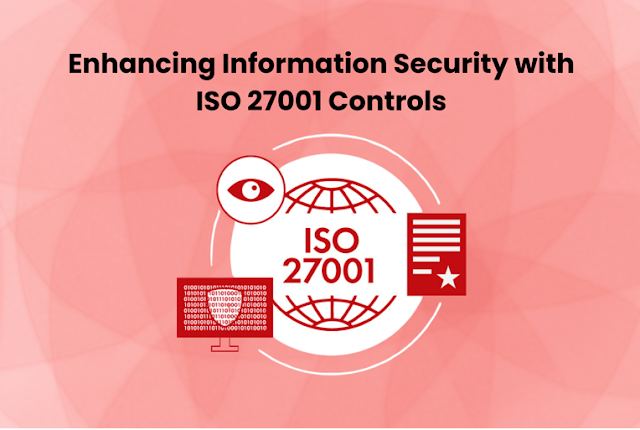For businesses all across the globe, protecting sensitive data has become critical. Because of the seriousness of cyber attacks, information systems must be protected by a robust architecture that reduces risks and guarantees their resilience. Introducing ISO 27001, an internationally accepted standard that outlines the best methods for creating, putting into place, maintaining, and enhancing an information security management system (ISMS). Professionals who want to learn more about this framework often enrol in an ISO 27001 Course.
In this blog, we shall explore the nuances of ISO 27001 Controls, explaining their critical function in strengthening information security.
Understanding ISO 27001 Controls
Understanding the fundamentals of ISO 27001 is essential before you start navigating the maze of controls. Strengthening an organisation's information security posture is facilitated by ISO 27001. Fundamentally, the standard offers a systematic way to protect critical enterprise data while guaranteeing its availability, integrity, and secrecy. Those who want to strengthen their grasp often enrol in an ISO 27001 course, a thorough training program that explains the nuances of the standard and equips professionals to handle the information security world with skill.Risk Assessment and Treatment
The risk assessment and treatment procedure is the cornerstone of the ISO 27001 system. This is the process by which businesses recognise, assess, and rank possible threats to their information assets. Based on risk management principles, ISO 27001 controls enable enterprises to customise their security measures based on the unique risks and vulnerabilities they face.Access Control
Limiting access to sensitive data is one of the main components of information security. ISO 27001 regulations prescribe a careful approach to handling user rights and permissions. By implementing strong access controls, companies may minimise the likelihood of unauthorised data breaches by limiting access to essential information to only authorised workers.Cryptography
Data is frequently compared to a precious commodity in the digital world. ISO 27001 controls recommend cryptography to protect data when it's in transit and at rest. Organisations may add another level of security to their data by encrypting it, which prevents unauthorised parties from deciphering it. This lessens the effect of intrusions by strengthening data storage and protecting critical information during transmission.Incident Response
Any firm might have a security problem at some point. A solid incident response plan may be developed using the guidelines provided by ISO 27001 controls. The standard ensures that companies are prepared to successfully address security breaches, from detection to containment and recovery. In-depth discussion of incident response plan creation is a common feature of ISO 27001 courses, which help professionals be ready for the ever-changing cybersecurity environment.Continuous Improvement
ISO 27001 is a dynamic framework that promotes continual improvement rather than a one-size-fits-all approach. Organisations are encouraged by the standard to evaluate and improve their information security management system regularly. The fundamental tenets of ISO 27001 controls include an iterative strategy that guarantees security measures adapt to new threats and strengthen the organisation's resistance to dynamic cyber environments.Security Policy
Building a strong security policy is like building a fortress when it comes to ISO 27001 measures. This information security policy, which serves as a strategic framework, outlines the organisation's commitment to protecting sensitive data. Professionals may be guided in creating policies that support the company's objectives by taking an ISO 27001 course, which guarantees that security measures are efficient and smoothly incorporated into the overall business plan.Physical Security
Although digital dangers get a fair amount of attention in information security, ISO 27001 measures also apply to physical risks. Protecting data centres, servers, and other physical assets is essential. Organisations may establish a comprehensive security posture that covers all digital and physical bases by combining access restrictions, environmental protection, and monitoring.Compliance
Ensuring compliance at a time when rules are constantly changing is a complex task. Information security is woven with compliance concerns thanks to the smooth integration of ISO 27001 standards. Organisations that connect their security measures with applicable standards and legislation find it easier to navigate the regulatory environment. Experts who understand the subtleties of compliance—typically acquired via an ISO 27001 course—become valuable resources in guiding the company through the treacherous regulatory waters.Conclusion
Establishing more robust defences is essential for enterprises in the digital age since information is a vital resource and a potential weakness. Information security may be approached in an organised and thorough manner with the help of ISO 27001 standards, which provide a robust framework that enables businesses to successfully negotiate the challenges of the digital world.Businesses may improve their information security posture and future-proof themselves against changing cyber threats by enrolling in ISO 27001 training and adhering to the standard's guidelines. ISO 27001 will undoubtedly remain a crucial component of enterprises' toolkits as they work toward a safe and resilient future.

No comments:
Post a Comment